Estimated reading time: 6 minutes
In the early days of African safaris, the 'Big 5' sadly referred to the five most dangerous and challenging animals that a trophy hunter could hunt. Thankfully, photographic safaris have transformed the way people encounter wildlife. Today, we use our digital cameras to 'shoot' elephant, rhino, buffalo, lion and leopard, taking nothing but their images for our trophies.
To capture great photographs of the Big 5 while on a photographic safari, I use different approaches for different species and situations. Here are my top tips for photographing these magnificent animals.
Photographing Elephants
When photographing elephants, you have a variety of compositions to choose from because these giants really lend themselves to a host of creative set-ups. By using a wide-angle lens, you can compose an image that contextualises them in the natural landscape. By using a zoom lens, you can focus on certain physical characteristics, like their tusks, trunks or wonderfully intriguing eyes.
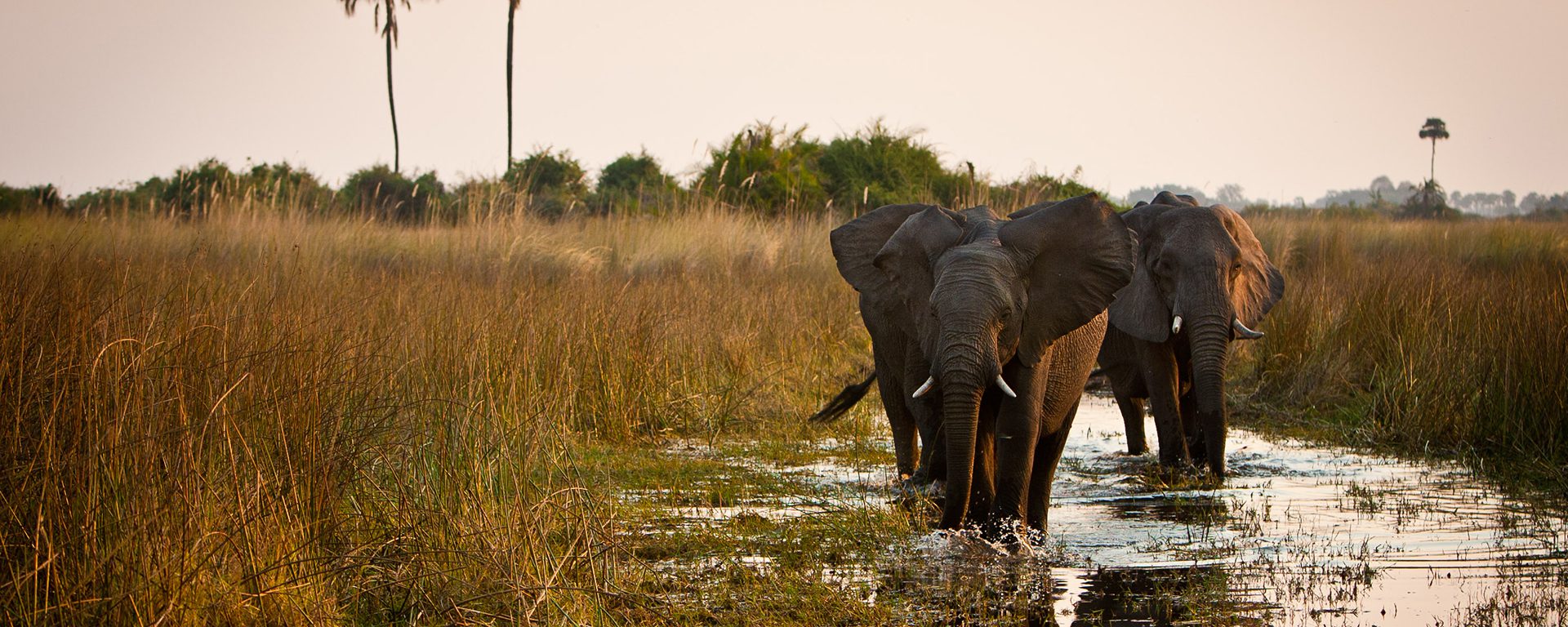
Using different angles and perspectives, you can emphasise their size by shooting from ground level, for example, or by photographing them from above. The image [below left] of a mother and calf is one of my favourite elephant pictures, which I took from the vantage point of a helicopter. Some safari camps have sunken or underground hides near waterholes, which are brilliant for capturing close-up images of elephants from a very intimate and unique perspective.
Best places to spot elephants: Kruger National Park, Chobe National Park, Okavango Delta, Amboseli National Park, Tarangire National Park.
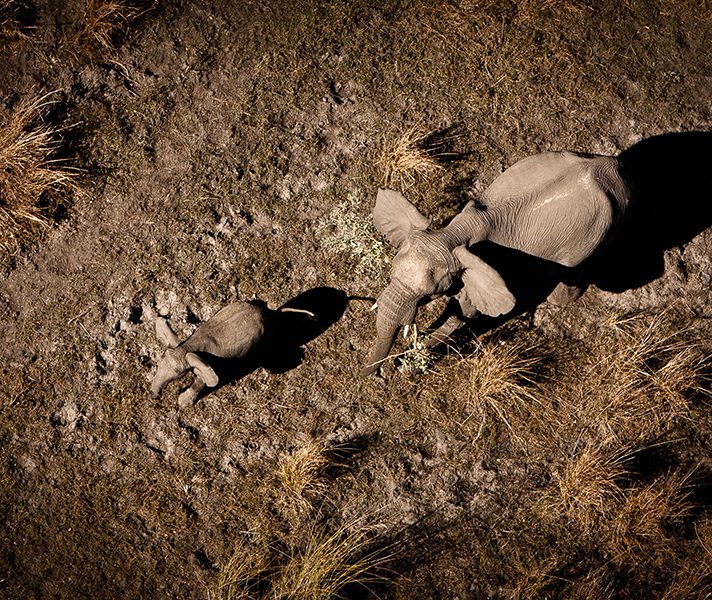
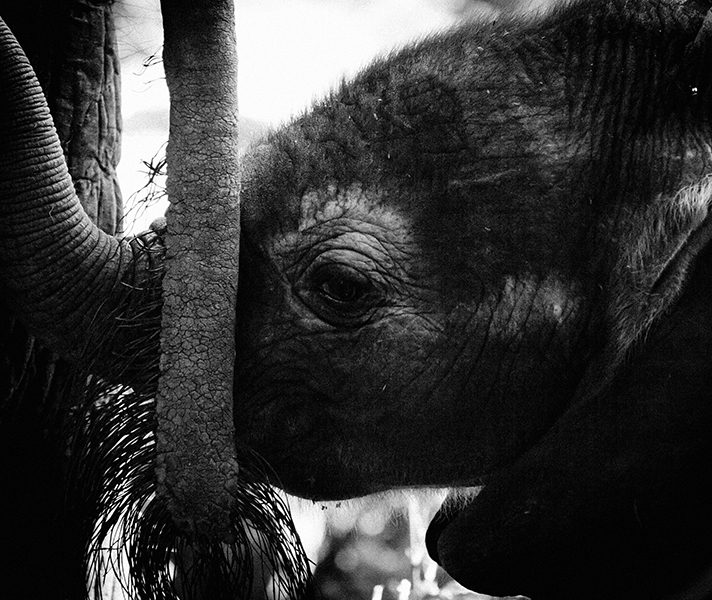
Photographing Rhino
Like elephants, the sheer massive bulk of rhinos gives a photographer many composition options. Again, a wide angle delivers an image that contextualises them in their natural environment while a zoom allows you to focus on aspects of their bodies.
My favourite images of rhinos are compositions that place these creatures in context of the landscape, as opposed to close-up portraits. The desert rhinos of Namibia are a great example of how the presence of these prehistoric-looking creatures in the midst of Namibia’s vast and harsh environment makes for very compelling imagery.
Best places to spot rhino: Madikwe Game Reserve, Phinda Game Reserve, Kruger National Park, Laikipia in Northern Kenya, Private Reserves around Etosha National Park.
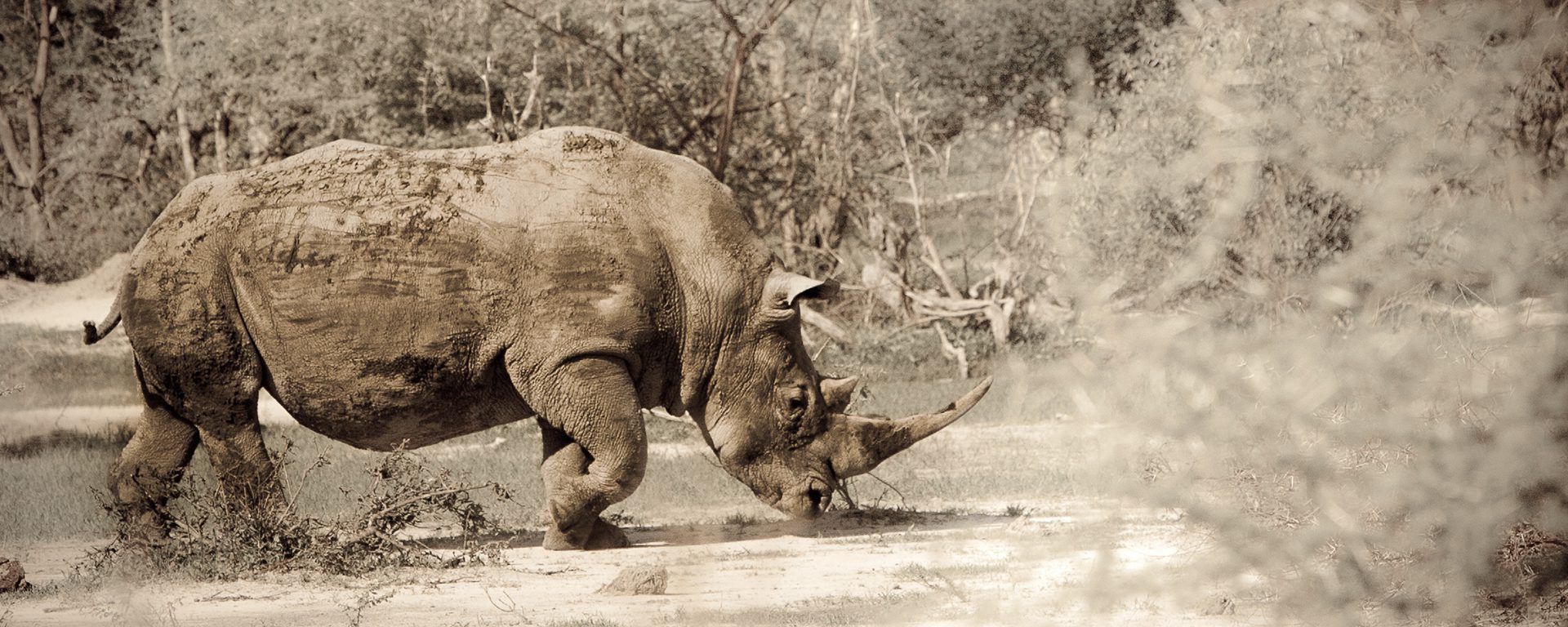
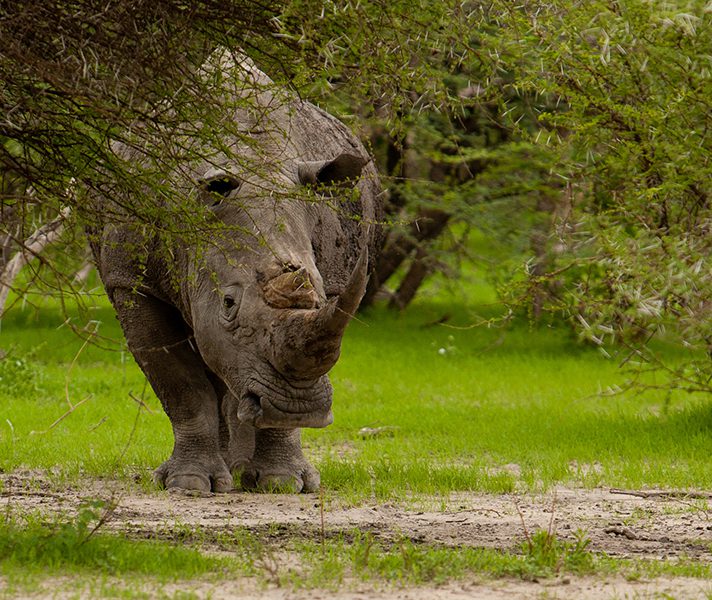
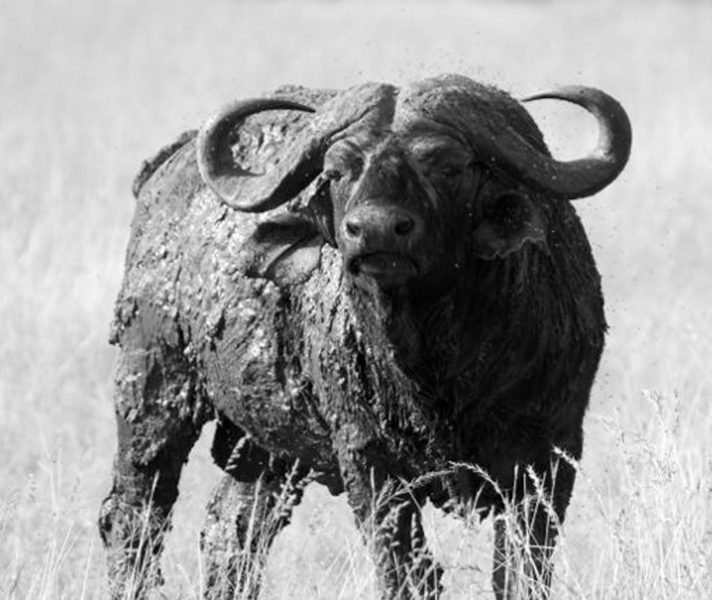
Photographing Buffalo
Buffalo are a difficult subject to photograph – the blackness of their bodies makes exposure tricky, which is something you have to keep front of mind. You need to ensure you are exposing correctly for the scene as a whole, or you risk completely overexposing the image when your light meter struggles to compensate for its dark hides.

When they move in herds, they often kick up a considerable amount of dust, which, if backlit, makes for a wonderfully atmospheric picture. Individually, bulls are great for character studies, with their big horns and sullen expressions. They like to wallow in mud, which may mean they can be found regularly in the same muddy spot. Caked in mud, flies buzzy around them and their bad-tempered prize fighter expression makes for great compositions. An image like that lends itself perfectly to a black-and-white conversion.
Best places to spot buffalo: Moremi Game Reserve, Savute, Kruger National Park, Kafue National Park, Duba Plains in the Okavango Delta.
Photographing Lion
Lions are the favourite safari model for most photographers, which means there are a multitude of compositions to inspire you. Set your image apart from the crowd, by adopting a few professional traits in your approach. Patience is the first trait you need: lions spend most of the day sleeping, so you need to choose your moment carefully. They tend to be most active at dusk and dawn, making these the times you can get great pictures of them interacting as they wake up, stretch, greet each other and set off on the hunt, or, are blood-splattered and energised from a night’s successful hunting, making them mock-fight and playful before they settle down for the day’s first snooze.
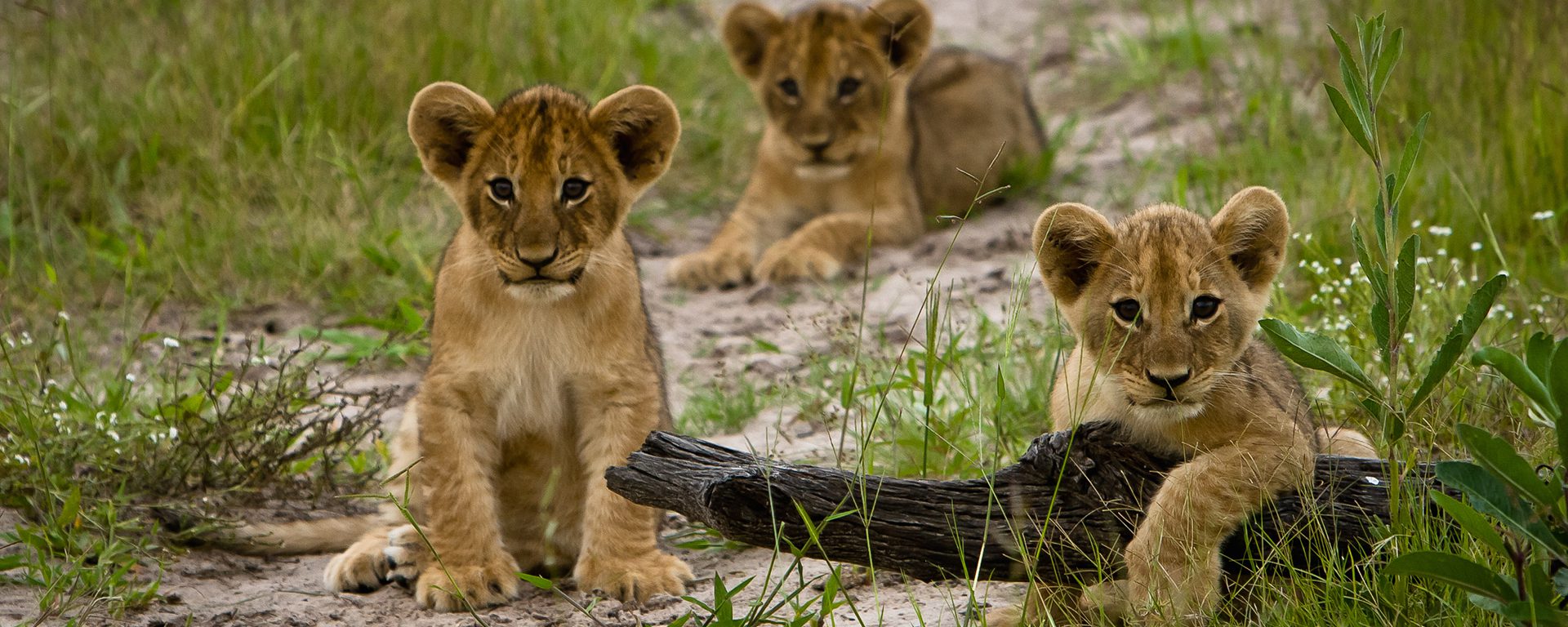
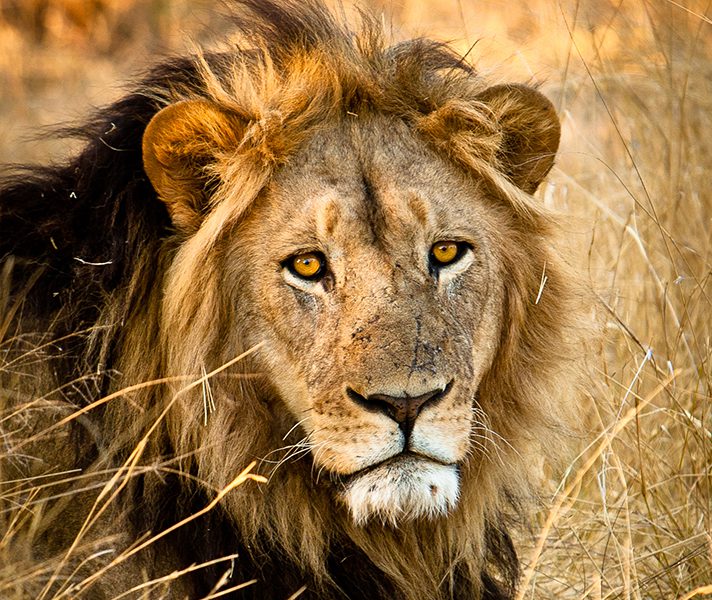
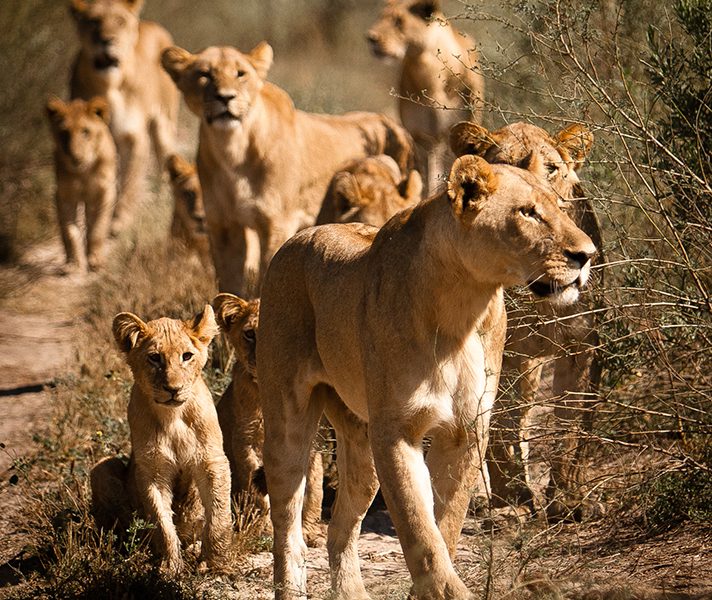
When lions are on a kill, people often make the mistake of zooming in on the feeding action without considering what is going on around the kill itself. I often find that the best photographic opportunities are happening the peripheries, where a lot of interaction is taking place without all the gore in the frame. Take a few minutes to look around if you are shooting at a lion kill – you might be rewarded with some spectacular images.
If lions have cubs, the little ones make wonderful subjects. They are usually more active than the adults during the day. Pay close attention to them as they play with each other and with the mothers, aunts and older siblings. A tight zoom will deliver gorgeous details – from oversized paws to kitten-like cuteness and a range of adorable facial expressions.
Best places to spot lion: Busanga Plains in Kafue National Park, Kruger Private Concessions, Sabi Sands Private Game Reserve, Duba Plains in the Okavango Delta, Masai Mara National Reserve, Serengeti National Park.
Photographing Leopards
Leopards are generally harder to find on safari, and as a result, photographers get overexcited when encountering them and make mistakes. A common error is to frame the shot too tightly and cut off their tails, spoiling the composition. Check your settings and review your images on the fly to make sure you are exposing and composing your images correctly. Often you encounter leopards at dusk when they become active ahead of the night hunt. They keep to shadows and undergrowth, which combined with low light, means you need to keep your eye on your exposure. Bump up your ISO to compensate, and make sure that you have your aperture on the widest setting. Bear in mind that if you are using a wide aperture, your depth of field will be very shallow, so make sure that you are focussing on exactly what you wish to portray in your image and adjust for the angle the cat is to you. Often, the most evocative leopard images make their enigmatic eyes the focus of the shot.
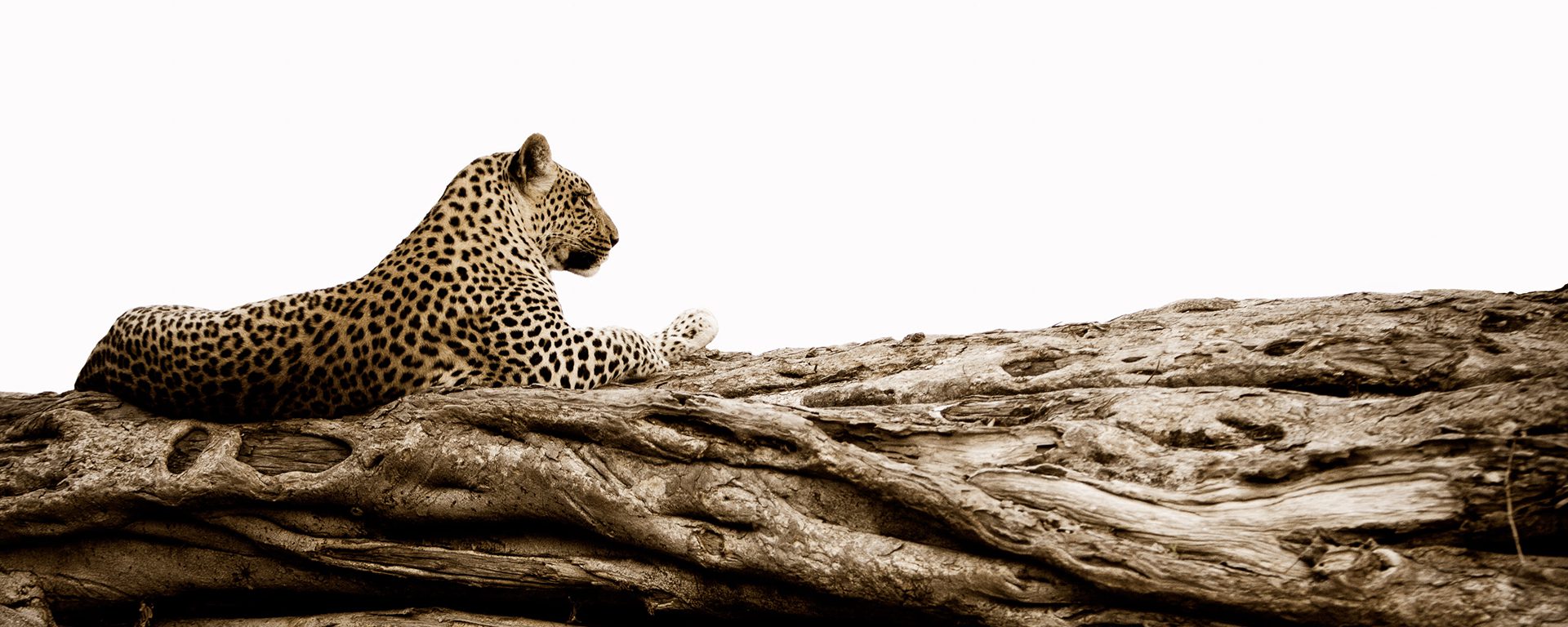
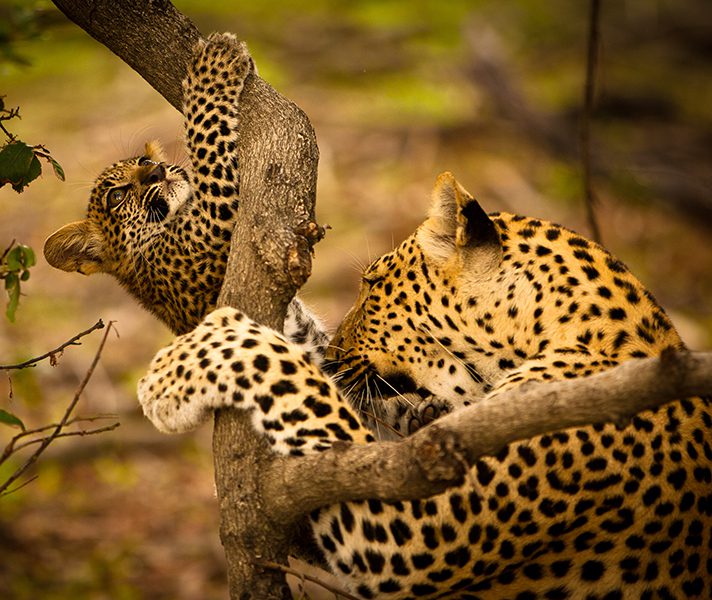
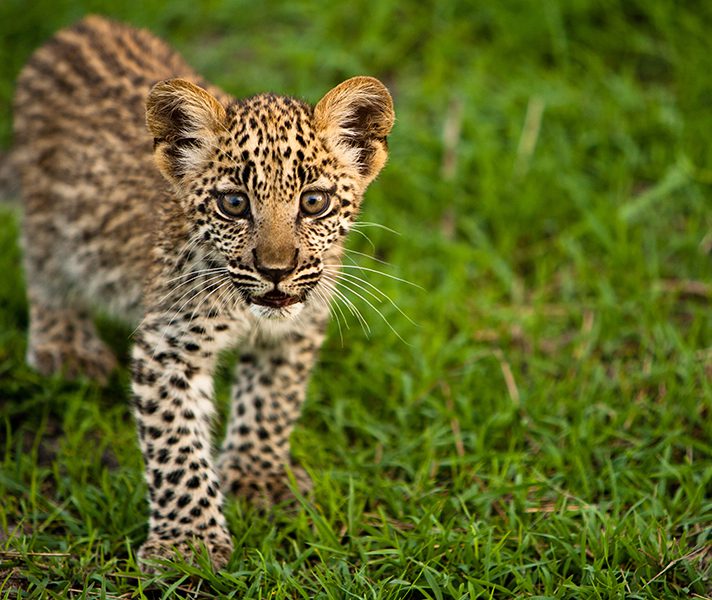
When they are not moving languidly through thickets, you may find them in trees, which is when you need to be extra careful with your exposure settings. If you have a bright sky for a background, use your camera’s spot meter function to get the best possible reading of the light where the leopard is – not the sky – then either manually plug the values in or use your AE (Auto Exposure) lock function. This will prevent your image from being underexposed, leaving you with a black blob where the leopard was and a lovely image of the sky!
Best places to spot leopard: Sabi Sands Private Game Reserve, Moremi Game Reserve, South Luangwa National Park, Timbavati Private Game Reserve, Masai Mara, Serengeti National Park.
Remember: to make your image stand out from others look at presenting your subject in the best way for the specific creature. Thinking creatively and reviewing your images after a day’s shooting will give you ideas on how to improve your pictures, and if you are lucky, Mother Nature will give you more than one chance to capture an iconic Big 5 moment. Remember the virtues of professionals: patience, utilising the available light, familiarity and dexterity with your equipment. Add a dose of good old luck and a great guide, and you will be rewarded with your own iconic images of Africa’s Big 5!
